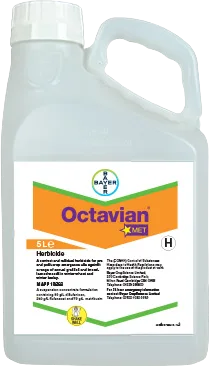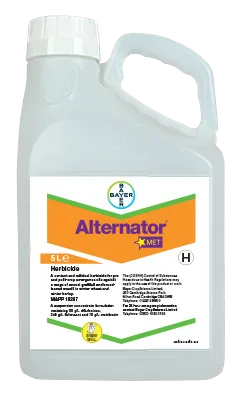Published on 30th October 2023
Local Insights
How to keep on top of weeds and disease this November

Richard Prankerd highlights what might be left to do on farms in the south this November
Crop Progress
Parts of the southeast have been wet in the second half of October, but not anywhere near the extent of other parts of the country. In fact in east Kent the first half of the month most conversations were around whether pre-emergence herbicides would work in the dry conditions. They’ve had moisture now, but to a good level.
In Hampshire, we had around 70mm of rain in the past 14 days up to 23 October. So it’s been wet but not all at once in a huge deluge. With a lot of soils over chalk it’s had time to infiltrate.
Most growers are drilled up with probably around 90-95% of wheat in the ground. Only wheat after maize or potatoes is left to do for the majority.
Richard’s agronomy tips for November and beyond
1. Top up options for emerged wheat
A few farmers continue to drill wheat, as well as winter barley, from mid-September. There were some testing conditions, because of the dry, for pre-emergence herbicides in these crops, but most have now also received top up herbicides with crops are at the two leaf stage.
The majority of wheat will have been drilled in October, and as this is written these will likely only have received pre-emergence treatments. The priority in November will be to top these treatments up where necessary because of grassweed pressure.
Where you are trying to control black-grass, Octavian Met or Alternator Met (flufenacet + diflufenican + metribuzin) can be a useful top up option with the metribuzin delivering not just root uptake but also shoot uptake. With the new label adjustment you’ve got the ability to use it at 1.0 L/ha, delivering 70g/ha of metribuzin and 240g/ha of flufenacet.
It’s a robust option by itself giving in our trials good activity against black-grass, Italian ryegrass and broadleaf weeds. We’ve seen some useful additional control or at least stunting of volunteer beans, for example, which can be a headache.
You also have the option of adding something like pendimethalin, depending on what you applied at pre-emergence. Again, in our trials, we’ve seen benefits of using multiple modes of action against insensitive grassweeds.
2. What about Italian ryegrass?
Italian ryegrass is an increasing concern, especially in east Kent, but also in other pockets in the southeast. A pre-emergence of Liberator (flufenacet + diflufenican) plus Proclus (aclonifen) and Defy (prosulfocarb) should have helped keep a lid on it, but its protracted emergence will mean top ups are necessary.
Monitor crops carefully. Italian ryegrass does emerge through pre-emergence residuals, but as it picks up the chemistry it turns purple or white and then dies. But look out for survivors that will need addressing.
There are a couple of options depending on what was used at pre-em. If you used Liberator + Proclus + Defy, then cinmethylin plus partners is a good top up as a belt and braces approach. Cinmethylin is a very good active against Italian ryegrass.
If you used cinmethylin at pre-emergence, then in our trials we’ve seen good activity from the metribuzin-containing products mixed with Tower (chlorotoluron).
Be cautious when applying any residual herbicide top up, but especially cinmethylin, to saturated soils as the crop can be susceptible to showing effects from the herbicide.
3. What weed control options are there for November drilled wheat?
Most wheat has been drilled but for those November drilled crops, there should be a general easing of grassweed pressure because of the opportunity to have sprayed off more emerged weeds outside of the crop with a good stale seedbed.
If black-grass pressure is low, you could use Liberator plus a mixer, such as prosulfocarb, liquid tri-allate or pendimethalin. In cooler conditions prosulfocarb will last longer. In higher black-grass pressure, then Liberator + Proclus is a more robust mix which should see you through to spring.
Make sure seeds are covered with at least 32mm of settled soil, especially where direct drilling.
4. Is it worth spraying an oilseed rape fungicide this autumn?
Most oilseed rape crops seem to have grown away quite well in the warmth we have before the storms in October, and are looking healthy and quite forward.
I’ve yet to see Phoma lesions but would expect them to start appearing in susceptible varieties. Light leaf spot, typically, also starts to appear from November onwards in untreated crops. It’s a polycyclic disease and spores are continuously moving around in the atmosphere, so crops can be infected at any time.
I tend to think light leaf spot needs treating in the way as Septoria in wheat, in that you want to keep on top of it and treat preventatively, so an autumn treatment of 0.32 L/ha of Proline (prothioconazole) or 0.5 L/ha of Aviator (prothioconazole + bixafen) will help protect crops through to the spring.
5. Monitor for aphids
There were very high numbers of aphids carrying barley yellow dwarf virus at the beginning of October in the south. With quite of damage from BYDV last year, keep monitoring for aphids using tools such as the T-Sum calculator and treat accordingly if thresholds are met.
6. When to terminate cover crops?
There are some good-looking cover crops on farms in the southeast, helped as with the oilseed rape by some warm autumnal weather. These will be helping to suck up and retaining nutrients through to the spring.
Termination timing is key to not impacting following cash crops. Make sure you leave enough time between spraying off and establishing the next crop. What rate of Roundup (glyphosate) you require will depend on what species you have in your cover crop and what time or growth habit.
This is important as you can look at early spring cover crop destruction rates, but weather patterns don’t always follow calendar months. If it is cool and dry, for example, glyphosate can take longer to get down into the roots, while if it is warmer things can move much more quickly, with the plants growing away vigorously so rates may need to be higher.
Typically you should look to leave at least six weeks between spraying and termination – it can take a lot less than that, but equally some species, such as radishes can take a while to knock off.





